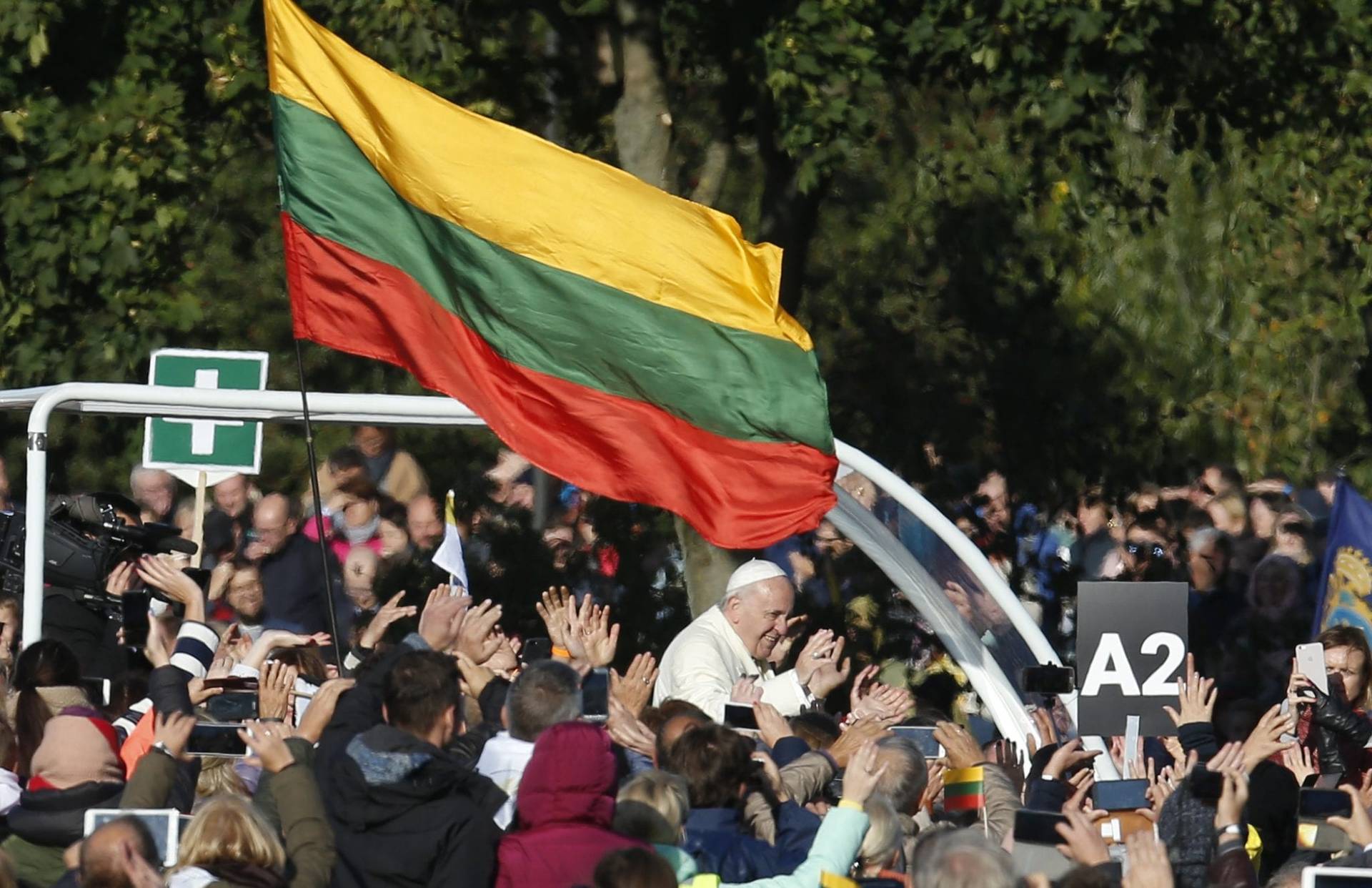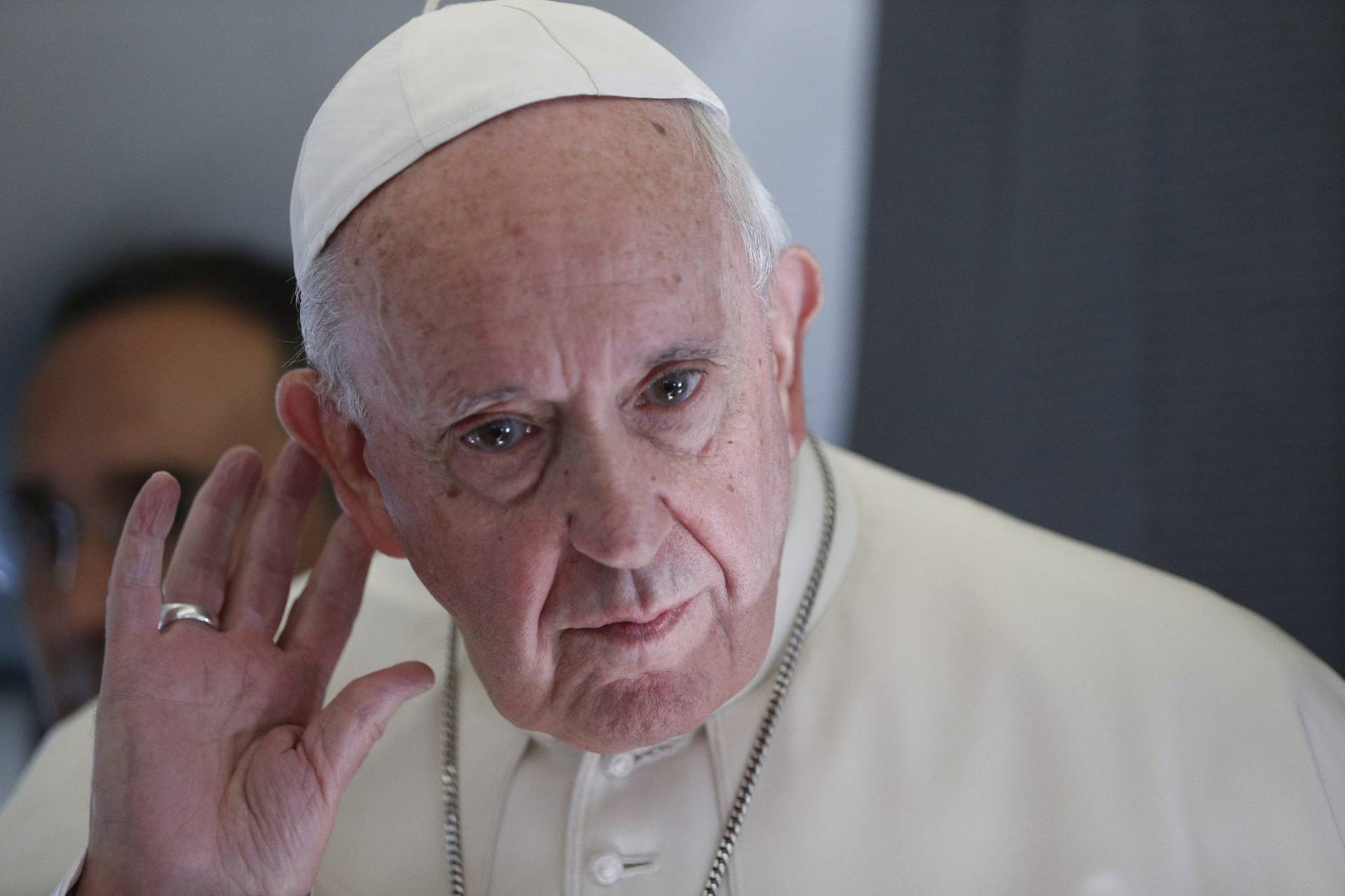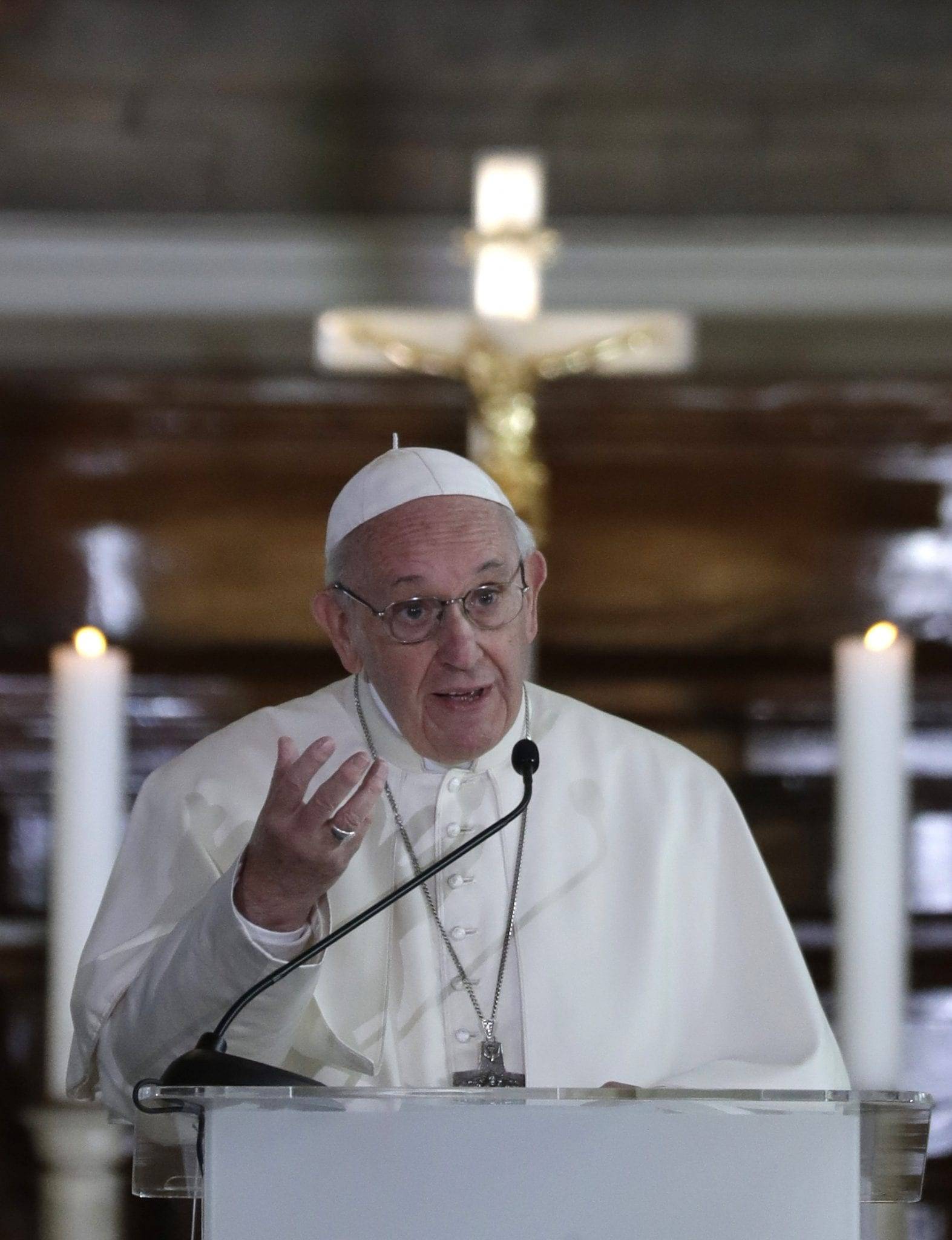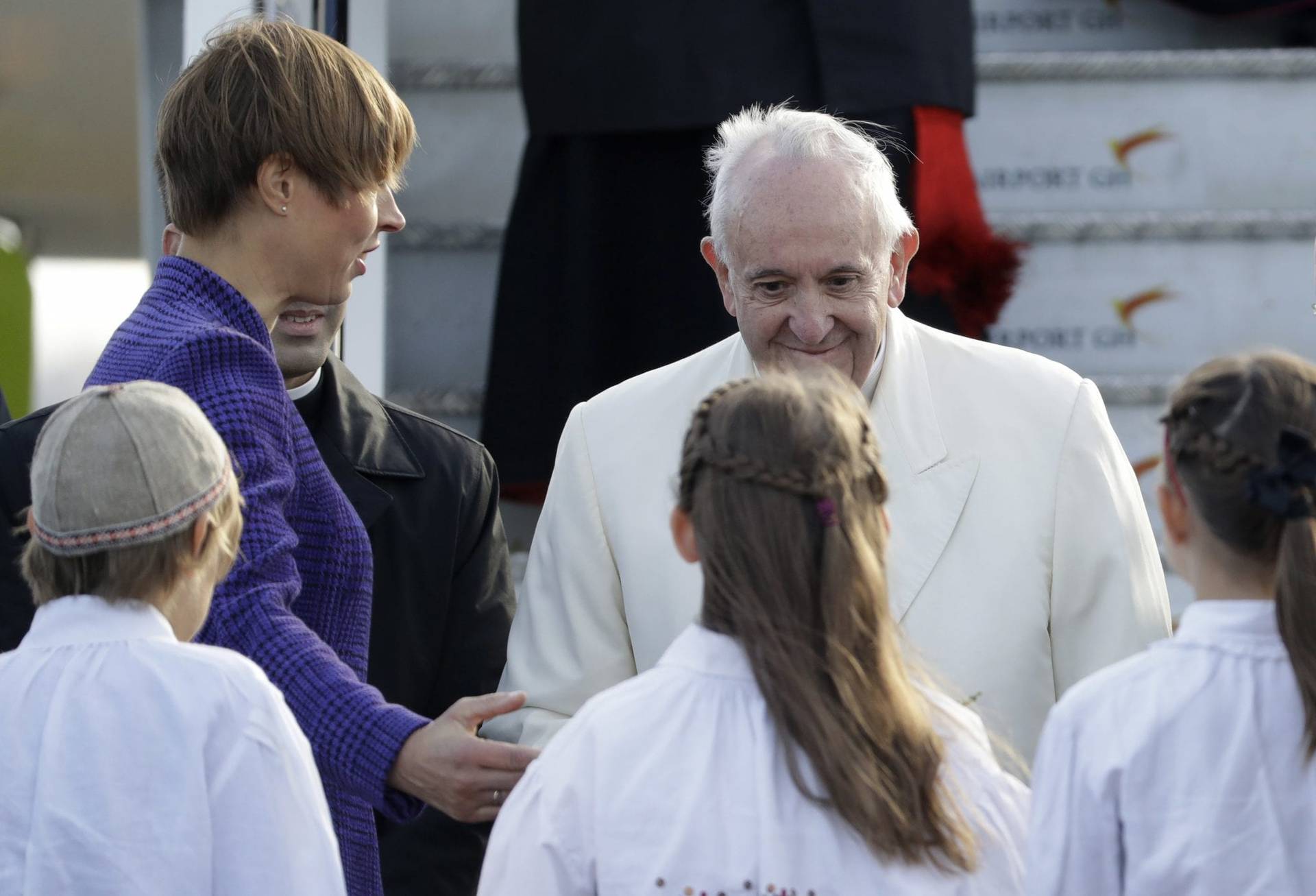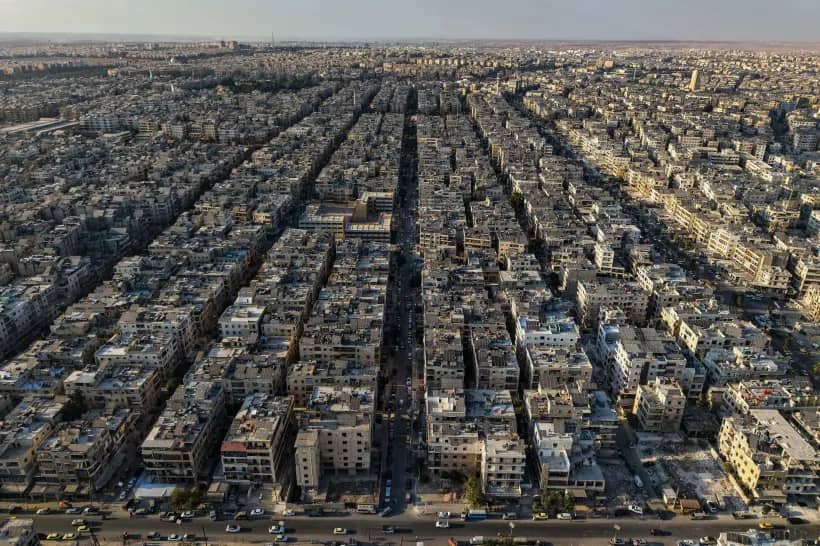VILNIUS, Lithuania – There was no way upon entering Vilnius, the capital of Lithuania, for Pope Francis not to pay homage to the Lady of the Town. It was a late addition to the schedule for the pontiff’s visit to the Baltic States, but one that just couldn’t be missed.
Above the Gate of Dawn, the only city gate in Vilnius left standing, a towering but demure image of the Virgin Mary patiently awaited the papal visit. Francis looked upward toward the gold and silver-clad icon, for centuries the protector of the city, as icy raindrops fell on the crowd quietly watching the prayerful meeting.
“The Mother of Mercy, like every good mother, tries to bring her family together. She whispers in our ear: ‘Look for your brother, look for your sister’,” the pope said Sept. 22.
“In this way, she opens to us the door to a new dawn, a new day.”
Painstakingly painted over eight 80-inch-thick oak planks, the more than six feet tall image of Mary is a mighty sight. The gray light of the late Lithuanian summer gave the impression that her silver gilded clothing shone with autonomous light. Twelve stars adorned her head, while etched roses, tulips, carnations and daffodils tumbled over her gown.
The image, created by an anonymous artist likely around 1630, is both beautiful and terrifying at the same time, not unlike the patronage that Mary exercised over the city.
Like a loving mother, the icon is said to have saved a two-year-old child who fell from a nearby height. But like a fearsome general, she is also said to have protected the city from a Swedish invasion, crushing four soldiers who attempted to enter the gate below her.
Just as much as the city has changed, under varying totalitarian occupations, the revered image of Mary has changed, through additions, restorations and even a gun shot still visible on the icon.
Beloved by Catholics and Orthodox, the image was canonically crowned Mother of Mercy in 1927, making Vilnius the “City of Mercy,” where the Feast of Mercy first took place. Mercy has also been a cornerstone of this pontificate, making the visit especially significant for Francis.
The pope’s devotion to Mary is also well documented, to the extent that he established a new feast for the Catholic Church devoted to her as the “Mother of the Church,” to be celebrated on the Monday after Pentecost. He also visits the Roman basilica of St. Mary Major to ask for the Virgin’s help before every foreign trip.
“Mary has sought to teach us that we can defend without attacking, that we can keep safe without the unhealthy need to distrust others,” the pope said.
“This Mother without Child, radiant with gold, is the Mother of everyone. She sees in every person who comes here what we ourselves fail so often to see: the face of her Son Jesus impressed on our heart.”
Francis is the second pontiff to visit the icon, the first being St. Pope John Paul II, who came to the sanctuary in 1993. Like his predecessor, Francis brought a rosary as a gift to the Virgin and spoke to onlookers, his white robe in strong contrast with the icon’s dark skin.
“In the past, we built all too many fortresses, but today we feel the need to look one another in the face and acknowledge one another as brothers and sisters, to walk side by side, and to discover and experience with joy and peace the value of fraternity,” the pope said.
He remarked on the multitudes of people from different faiths and backgrounds, Russians and Poles, Catholic and Orthodox, who gather every year at the gate to gaze upon Mary and ask for her intercession.
“How good it would be if this ease in moving from one place to another could be accompanied by ease in establishing points of encounter and solidarity, so that we can share generously the gifts we have freely received,” Francis continued. “So that we can go out and give ourselves to one another, receiving in turn the presence and the diversity of others as a gift and a source of enrichment in our lives.”
He warned of the ways in which an increasingly more open and globalized world can stir competition in people, and leave room “for conflict that divides us, tensions that exhaust us, hatred and enmity that get us nowhere.”
Bowed over, the pope also recited the rosary with those gathered but not before asking Mary to create a country “capable of accepting everyone, of receiving from the Virgin Mother the gifts of dialogue and patience, of closeness and welcome, a country that loves, pardons and does not condemn.”
“May we be a country that chooses to build bridges not walls, that prefers mercy not judgment,” he concluded.










